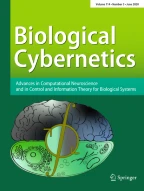Abstract.
The electroencephalogram (EEG) is a multiscaled signal consisting of several time-series components each with different dominant frequency ranges and different origins. Nonlinear measures of the EEG reflect the complexity of the overall EEG, but not of each component in it. The aim of this study is to examine effect of the sound and light (SL) stimulation on the complexity of each component of the EEG. We used independent component analysis to obtain independent components of the EEG. The first positive Lyapunov exponent (L1) was estimated as a nonlinear measure of complexity. Twelve subjects were administered photic and auditory stimuli with a frequency of 10 Hz, which corresponded to the alpha frequency of the EEG, by a sound and light entrainment device. We compared the L1 values of the EEGs and their independent components between baseline and after the SL stimulation. We detected that the L1 values of the EEG decreased after the SL stimulation in all channels except C3 and F4, indicating that the complexity of the EEG decreased. We showed that alpha components increased in proportion but decreased in complexity after the SL stimulation. The beta independent components were found to decrease in proportion and complexity. These results suggest that decreased complexity of the EEG after the SL stimulation may be principally caused by decreased complexity and increased proportion of the alpha independent components. We showed also that theta components increased in complexity after the SL stimulation. We propose that nonlinear dynamical analysis combined with independent component analysis may be helpful in understanding the temporal characteristics of the EEG, which cannot be detected by conventional linear or nonlinear methods.
Similar content being viewed by others
Author information
Authors and Affiliations
Additional information
Received: 12 March 2001 / Accepted in revised form: 27 November 2001
Rights and permissions
About this article
Cite this article
Jin, SH., Jeong, J., Jeong, DG. et al. Nonlinear dynamics of the EEG separated by independent component analysis after sound and light stimulation. Biol Cybern 86, 395–401 (2002). https://doi.org/10.1007/s00422-001-0304-z
Issue Date:
DOI: https://doi.org/10.1007/s00422-001-0304-z
